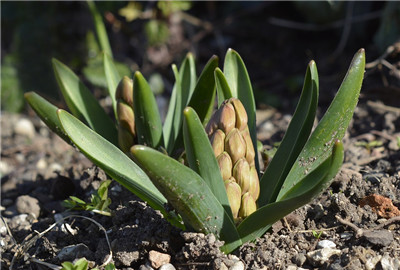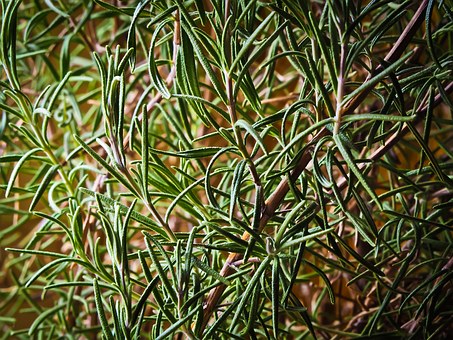What are the causes of yellowing and slow growing diseases in rice leaves at seedling stage? How to govern effectively?
Rice is the second largest food crop in China, so the high yield of rice is a common concern. Due to the weak resistance of rice at seedling stage, it is easy to cause diseases. So what are the causes of these diseases? How to govern effectively?

one。 The influence of element deficiency
a. Nitrogen deficiency
It begins to turn yellow from the tip of the old leaf, then gradually extends to the heart leaf, and finally the whole plant becomes yellowish green. When it is serious, the leaf tip and leaf edge are withered and yellow, and the seedling grows slowly. From afar, the seedling is yellow. Urea, ammonium bicarbonate and other available nitrogen fertilizers should be applied in time.
b. Potassium deficiency
The potassium fertilizer is insufficient, the plant type is short, the tiller is few, the leaf is straight, the new leaf is dark green and has no luster, develops upward from the old leaf, and produces rust spots on the leaf, which spreads downward or inward from the leaf tip or leaf edge, and becomes large spots or strips in serious cases. The leaves are brown and dead (also known as red blight), which looks like burning from a distance. The symptom should be drained immediately, gap irrigation should be used, potassium fertilizer should be applied in time, or potassium dihydrogen phosphate + American star or alginic acid should be sprayed.
c. Zinc deficiency
Due to zinc deficiency, the leaves first lost green and albino in the midvein area, then appeared yellow-red or reddish-brown spots or patches, became reddish-brown scorched, the leaves became narrower, and the veins were brittle and easy to break. Serious leaf albino seedlings can be remedied by foliar spraying of zinc sulfate or chelated zinc.
two。 Yellowing caused by fertilizer or drug damage
Improper selection of fertilizer, large amount of use, improper application of pesticides and re-spraying will also cause poisoning and yellowing, resulting in yellowing of leaves into pieces. Sometimes there are anxious spots on the yellow leaves, when the drug damage is serious, the leaves appear chlorosis or yellowing spots, or anxious water loss withered, and sometimes even the whole plant withered. In the early stage of occurrence, deep water can be irrigated immediately in the field, and the water can be changed for 2 or 3 times, or clear water can be sprayed on the rice plants, and spraying Bigou or brassin + American star or alginic acid on the leaves can alleviate the degree of drug damage. Combined with timely topdressing of urea and other quick-acting fertilizers, in order to quickly return to normal.
three。 Poisoning and yellowing of plants
a. Reducing gas and hydrogen sulfide poisoning
The roots are black, sometimes the soil smells like rotten eggs, and white roots are few and thin. The old leaves at the base are yellowish brown, the tips of the leaves are scorched, and in severe cases, the old leaves die, leaving only 1 or 2 green new leaves in the upper part.
b. Organic acidosis
The root system shrinks and the epidermis falls off. The new root is few, the leaf color is yellow, sometimes produces the atrophy phenomenon, serious when the lower leaf withered and died. Toxic yellowing fields should also be drained immediately to improve soil permeability, increase oxygen content and promote root growth. Fields with too much organic acid should also be treated with quicklime or soil modifiers to neutralize soil acidity.
four。 Yellowing caused by disease infection
a. Seedling blast
Most of them occurred before the 3-leaf stage, the base of the seedling became dark brown, the upper part showed yellowish brown or light red, when the leaves were curled up, the diseased seedlings died. Timely spraying rice blast Ling or Fuji No. 1 or rice blast amide and other control.
b. Blight disease
From the old leaves to the young leaves gradually turn yellow, the stem base is soft rot, easy to pull out, the whole plant yellowish brown withered. Pay attention to strengthening temperature management, early spraying metalaxyl or moisturizing Miaoqing + American star or Anlibang prevention and control.
c. Bacterial blight
Generally, there are yellowish green or dark green spots on the tip or edge of the leaf, and then spread into stripes along the vein, showing grayish white. The disease part and the healthy part decompose obviously, when the humidity is high, there is often yellowish-brown "bacterial pus" on the disease spot.
d. Rice bacterial leaf spot
At first, it was a dark green water-stained translucent spot, followed by a light yellow narrow spot along the leaf vein, oily and translucent, with a large amount of bacterial pus overflowing in humidity. In severe cases, multiple disease spots can fuse with each other, and the leaves are reddish brown and die.
e. Bacterial base rot
The heart leaves wither and curl, and some have turned yellow and withered, like the dead heart seedlings caused by drillworms, but the stem has no wormhole, the base of the stem is often black and rotten, there is a bad smell, and the stem nodes become hard and brittle and easy to break.
Summary of the above disease treatment: bacterial leaf blight, bacterial leaf spot and bacterial base rot are all bacterial diseases. At the initial stage of occurrence, thiobacillus copper or thiosen copper or chlorobromoisocyanuric acid can be sprayed in time for prevention and control.
five。 Yellowing caused by infection of insect pests and leafhoppers
a. Dry tip nematode disease
The upper part of the leaf tip dried up and withered, yellowish white or yellowish brown, and twisted into a paper twist. The key is to select disease-free seeds before sowing, or to choose soaking seeds or fenitrothion to soak seeds, and the effect of spraying after occurrence is poor.
b. Rice verticillium wilt
The plant is dwarfed, the leaves are small, the tillers are clustered, the leaves and leaf sheaths are yellowed, and the plants die when they are serious.
c. Rice orange leaf disease
The leaf tip of the lower leaf first yellowed, then the whole leaf yellowed downward, and spread upward, resulting in yellowing of the whole plant leaves, short plants, few tillers, few new roots, short and straight leaves, and easy to die after tillering.
d. Yellow dwarf disease
Yellowing from the tip of the parietal leaf and its next leaf. The diseased plants were significantly dwarfed, non-tillering, short roots, spreading diseased leaves, even drooping, and serious plant death.
Summary of the treatment of diseases caused by leafhopper transmission: yellow dwarf disease, Verticillium wilt and orange leaf disease are all caused by leafhopper transmission. Attention should be paid to the prevention and control of leafhoppers. When it occurs in the field, pull out and destroy it in time, spray isoprocarb + Atailing or Ningnanmycin + green protection and control.
six。 Yellowing caused by transmission of gray planthopper virus
a. Downy mildew
The plant is dwarfed, the leaves are chlorotic, the leaves are leaf-like, the spots are yellow-white, sometimes the heart leaves are yellowed and twisted, and the whole plant is yellowed and withered seriously. At the initial stage of occurrence, timely spraying metalaxyl manganese zinc or urea zinc or aldicarb and other prevention and control.
b. Rice stripe blight
Heart leaf disease, along the vein intermittent yellow-green or yellow-white stripes, disease spots enlarged, half or more of the diseased leaves will be yellow-white. Others are still green stripes, plant dwarfing is not obvious, few tillers, high-stem varieties will be paper twist-like bending and sagging, serious plant withered.
Summary on the treatment of gray planthopper virus transmission diseases: grey planthopper virus transmission is caused by gray planthopper virus transmission. Pay attention to the control of gray planthopper at ordinary times, especially in the seedling field. After occurrence in the field, it is timely to spray virulent or Atailing + Biao or brassin + thiazide or fipronil and other control.
VII. Influence of insect pests
a. Thrips
Thrips damage leaves after the emergence of yellow-white dots or micropores, leaf tips withered yellow vertical shrinkage, serious pieces of seedlings yellow and red, such as fire. Control measures such as thiocarbamide or carbosulfan or imidacloprid should be selected in time, and attention should be paid to strengthening the management of water and fertilizer.
Finally, a summary: pay attention to soil testing formula fertilization, no immature organic fertilizer, no partial application of nitrogen fertilizer, reasonable close planting, do not plant too deep or too much water in the field. Scientific and rational use of chemicals, seed dressing or soaking seeds before sowing to cultivate robust plants. In peacetime, the prevention and control of poisonous pests such as gray planthopper and leafhopper in seedling field and field can effectively prevent the yellowing of leaves caused by the above-mentioned reasons.
Time: 2019-04-12 Click:
- Prev

When will hyacinth blossom? How long is the florescence? How to plant it?
Hyacinth, a herbaceous bulbous plant for many years, is the most fragrant variety of flowering plants found in the study. So when does hyacinth blossom? How long is the florescence? How to plant it? Next, let's learn about it: one. When will hyacinth blossom
- Next

What's the difference between rosemary and thyme? How do you keep rosemary?
Rosemary alias the dew of the ocean. Evergreen shrub having erect gray-green narrowly pointed leaves that emit pine scent and have been regarded as memory-enhancing herbs since ancient times. Light blue flowers bloom in spring and summer. Rosemary, native to the Mediterranean coast, is an evergreen shrub with small blue flowers in summer.
Related
- Fuxing push coffee new agricultural production and marketing class: lack of small-scale processing plants
- Jujube rice field leisure farm deep ploughing Yilan for five years to create a space for organic food and play
- Nongyu Farm-A trial of organic papaya for brave women with advanced technology
- Four points for attention in the prevention and control of diseases and insect pests of edible fungi
- How to add nutrient solution to Edible Fungi
- Is there any good way to control edible fungus mites?
- Open Inoculation Technology of Edible Fungi
- Is there any clever way to use fertilizer for edible fungus in winter?
- What agents are used to kill the pathogens of edible fungi in the mushroom shed?
- Rapid drying of Edible Fungi

